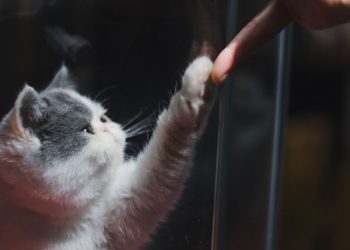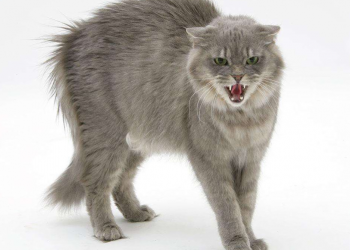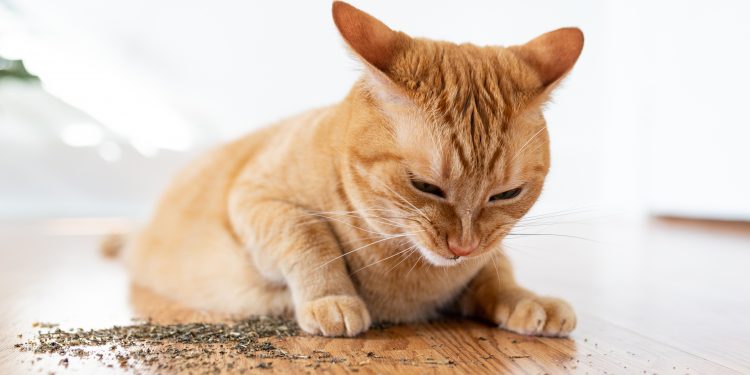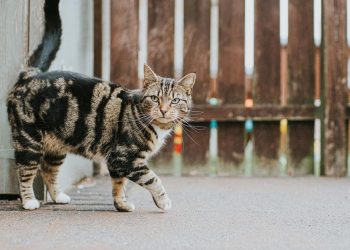Most cat caregivers have offered their cat a sniff or taste of catnip and watched as their feline friends enjoyed it—eating, smelling, rolling around in it, or simply lounging in a relaxed state—but what exactly is catnip and why do cats seemingly go crazy for it?
What Is Catnip?
Catnip is a plant—known scientifically as Nepeta cataria—that is a member of the mint family. The active ingredient is called nepetalactone, which many domestic cats respond to in a variety of different ways. (Fun fact: It affects big cats like lions and tigers as well.) The plant produces this chemical (nepetalactone) in microscopic bulbs that coat its leaves, stems, and seedpods. When these fragile bulbs rupture, they release the nepetalactone into the air, which is why you can find cats chewing on the plant to release more nepetalactone. While it’s originally native to Europe and Asia, it now grows wild across the country along roads and highways. To identify it, catnip is a grayish-green plant with jagged heart shaped leaves and thick stems that are both covered in fuzzy hairs.
How Does It Affect Your Cat?
Many experts believe that this chemical (nepetalactone) acts as a feline attractant and triggers the response. Once your cat smells the catnip, they may begin to rub, kick, chew, and roll in it to help release the oil trapped in the plant’s leaves. When it enters a cat’s nose, it binds to receptors on the sensory neurons lining the nasal cavity, which, in turn, activate different areas of the brain that control emotion and behavior. The effects of catnip are short-lived and usually last 10 to 15 minutes. The dose of catnip and how your cat consumes it will result in different responses: The more your cat eats or inhales it, the stronger the effect.
Cats commonly react to catnip by sniffing, licking, eating, rolling, and rubbing their cheeks on it. Some other responses include stretching, drooling, jumping, and hyperactivity while others may become mellow. Even though your cat may display these behaviors, the response occurs through the olfactory system. Once your cat has had enough, they will walk away from it. A cat may not respond again to catnip for at least a couple of hours. It’s worth noting that not all cats are affected by catnip—this response is inherited. According to the American Chemical Society, experts state that one in three of cats do not inherit the sensitivity to nepetalactone and kittens don’t develop the ability to react to catnip until they are around three to six months of age.
How to Use It at Home
Catnip is commonly used to encourage cats to explore and play, but it can also be used as a training aid. Place a small amount of catnip on your cat’s scratching post to encourage scratching, or in their carrier to encourage them to enter, thereby creating a positive association. Catnip can be used in veterinary clinics, shelters, and foster homes in addition to a cat’s own home to help lower stress levels. Catnip is non-toxic to cats. Although rare, overindulgence can cause vomiting or diarrhea, so you may want to limit your cat’s exposure if she’s overly interested. Keep your cat happy and interested in their toys by rotating them: offer some toys as available and hide the rest in a ziplock bag or jar and marinate them in catnip. This keeps the toys novel and fun. You can purchase catnip toys and dried catnip in most pet stores or online ; dried catnip does not contain as much nepetalactone oil as fresh catnip, so it tends to smell stronger and is still enticing to cats.
An even better suggestion: grow your own catnip. It’s easy to grow and can be found in most nurseries in the herb section. They are best planted in early spring and prefer sandy soil and full sun. For storing catnip, you can freeze in an airtight container to keep it fresh.




















